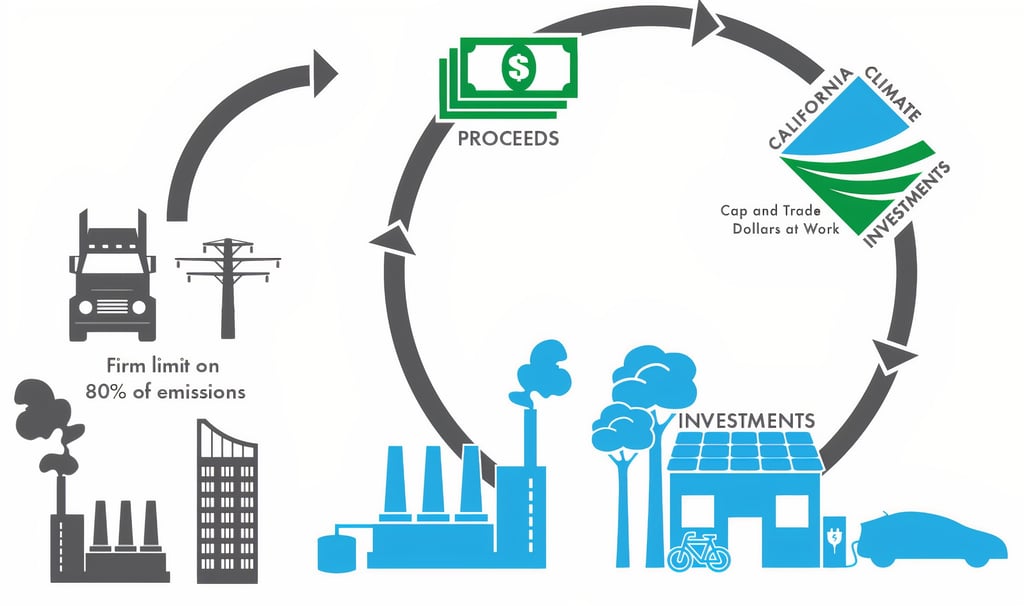Cap and Trade
ENVIRONMENTAL ISSUES
Danny Xu
11/14/20252 min read


Governments are limited in the means they can use to fight climate change but still have the availability of several instruments.
One of a most crucial system is the so called cap and trade. The title may be technical but the concept is very simple: establish a ceiling for emissions and then allow companies to figure out the cheapest way to be under that ceiling.
How Cap and Trade Works
The "cap" marks the highest level of allowed pollution, which in most cases is measured in tons of carbon dioxide. The permits, which are the allowed emissions contained by the cap, are divided up by the government agencies. The government issues to the companies the permits that have to be bought or given away free of charge.
If any company makes carbon emissions less than the level stated on the permit, it is inside its rights to sell the allowances that are not used. In the case another company emits more than its share, it must buy extra permits to cover the exhaled spot. The process of selling and buying is called the "trade".
Through this power, the total emissions are within the cap, but businesses have the opportunity to choose their way. Those that are able to cheaply cut pollution do it and sell their extra permits at the same time, while others if they do not reduce emissions pay more. Over time, the government is allowed to lower the cap and thus total pollution can decrease slowly.
Why Cap and Trade Is Important
The system of cap and trade stimulates efficiency. The concept of enforcing specific emission reduction methods for companies is abandoned; instead, the market selects the most efficient solutions. Along with that, the system sets up a financial benefit: emission reduction could turn into a money-making opportunity.
The scalability of the system is another very powerful advantage. The policymakers are allowed to gradually lower the cap which keeps the total emission at the desired low level but gives the companies the time they need to make changes in their activities.
Examples in Action
This mechanism is not an outcome of pure imagination but is a real success story. In the United States, for example, in the 1990s cap and trade was used as a measure to deal with acid rain by cutting sulfur dioxide emissions, and it was very effective. At present, the cap-and-trade program of the European Union is the largest in the world in which carbon emissions are limited, and there is also a program in California.
The Bottom Line
The cap and trade system, despite its complicated sounding name, is in fact quite simple in its core idea: impose a strict ceiling for emissions and encourage businesses to find the most efficient way of complying by trading. This idea, which embodies the combination of environmental accountability and financial flexibility, serves as an indication that market mechanisms could be a potent weapon in the battle against climate change.
Sources:
California Air Resources Board. 2024. “Cap-And-Trade Program | California Air Resources Board.” Ww2.Arb.ca.gov. 2024. https://ww2.arb.ca.gov/our-work/programs/cap-and-trade-program.
